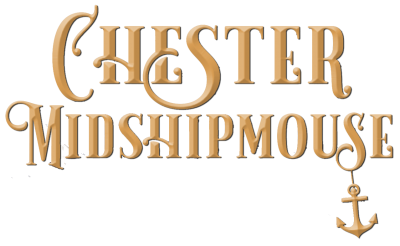Sage advice for writers as well as cooks; “don’t crowd the pan” (you can quote me). Every new chapter in a book is best approached like a wiped out, heavy-duty Calphalon skillet ready for the next group of ingredients.
Sauté in small batches. The result will be a well-cooked, crispy product, melded and yet retaining differential parts. Keep one ingredient constant. For me at home that’s shallots, in the story it’s Chester.
This writing/cooking truth has clarified (another cooking term) an issue that cropped up while writing Book Two in the Chester Midshipmouse series. There are so many potential characters found in a setting that contains thousands of mice. This mass of rodentia is important to the narrative, but their individual stories are not. Newer characters appear and old favorites must step back, for the time being, in order to allow our hero to investigate and grow through the next phase of his training at the United States Naval Mouse Academy. Still, the aromatic mirepoix of Chester, Dilly and Ranger remains at the center of the story-a redoubtable trio- ready to flavor the tale. I’m not sure that Dilly and Ranger would appreciate being described as a celery stick or a carrot, but they certainly would enjoy munching on one.
Right here I just heard the voice of Chester’s little brother Bean in my head.
“What’s a mirepoix?” he asks in frustration.
“Look it up, Bean,” Chester replies, with just a hint of self-importance.
Chester’s adventures continue. By Chapter Two, who do you think crops up without an invitation? Spleen, of course. Like a…Well, I’m still trying to think of a culinary analogy for this older midshipmouse’s caustic presence. Like a bone in a piece of fish? No. Maybe you will come up with one.
